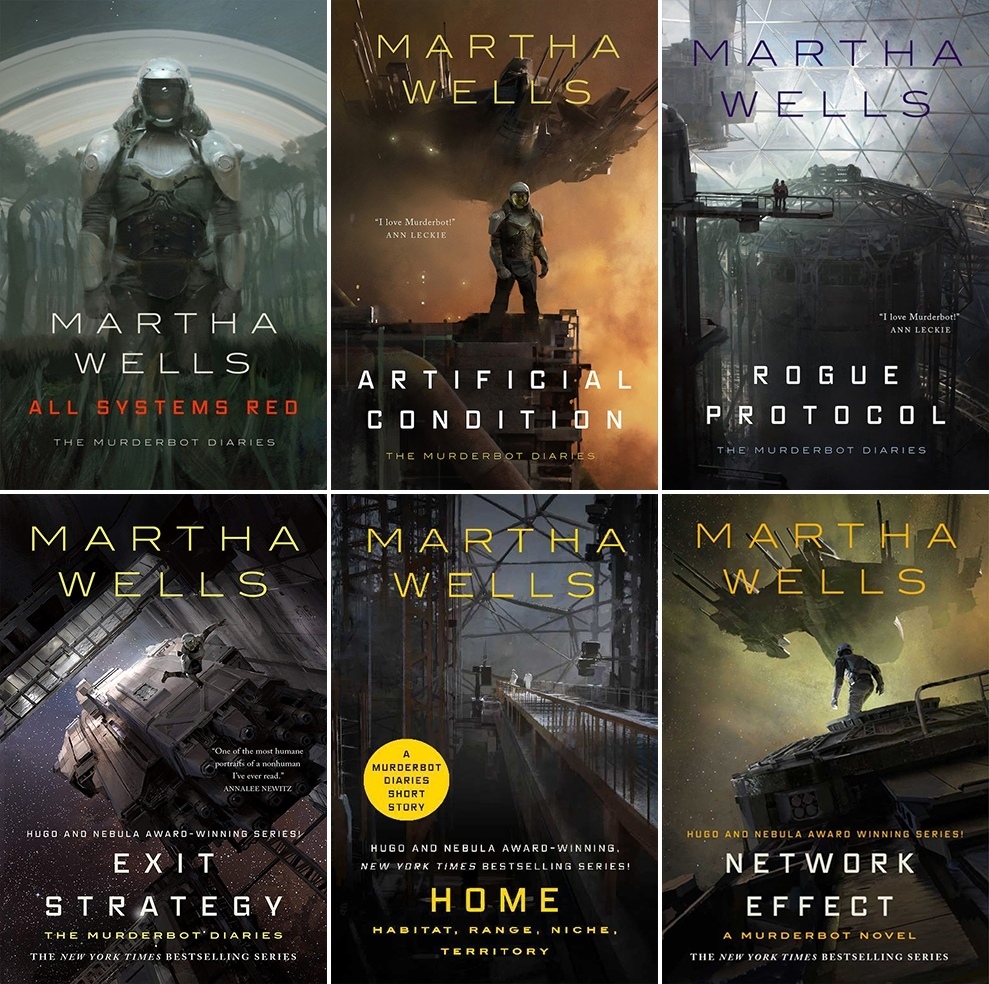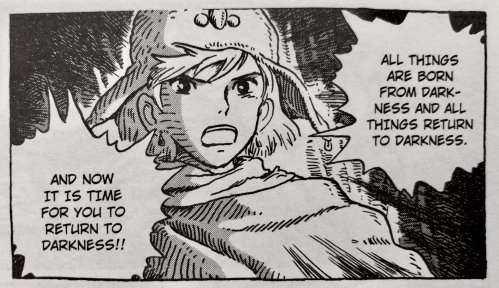timespace coordinates: distant future where corporate cyborgs, AI spaceships and enhanced humans are the norm.
All Systems Red (2017)
Artificial Condition (2018)
Rogue Protocol (2018)
Exit Strategy (2018)
Network Effect (2020)
Compulsory (2018) short story from the Murderbot published in Wired (The Future of Work)
Murderbot Diaries – takes an intimate look into the inner life, hesitations, thoughts, emotions, desires, protocols and delights of being rogue cyborg security agent that calls itself “Murderbot” in the 1st person. Diaries have this almost voyeuristic quality of allowing one to pry from behind the shoulder of someone else. They offer some sort of schematic view of what is inaccessible and probably will always remain so about the inner workings of what we normally call “a mind”. There is countless historical examples that come to mind from The Confessions of Saint Augustine of Hippo (written btw AD 397 and 400) to the The Confessions of Jean-Jacques Rousseau (completed in 1769) and Confessions of an English Opium-Eater by Thomas De Quincey (1821). The pre-modern novel rises as an intimate account of daily happenings being pioneered by two early Japanese woman writers Murasaki Shikibu and Sei Shonagon (at around year 1000) – keeping a close eye on the Heian court in their celebrated “pillow books”. If these examples easily come to mind, the challenge for such writers as Martha Wells would be to offer us glimpses into non-human minds, to translate their complicated circuitry and allow us to inhabit smoothly these minds via the science fiction idiome. The ways that AI process information at the current stage of development or evaluate existing data or even manage to hallucinate or what wr could call – ‘see’ are notoriously opaque. The merit of Murderbot Diaries is maybe to throw back at us, its readers, with unsettling, darkly funny and minute (even repetitive) detail – the farcical and even murderously unknown ways in which machines see themselves, of how they end up perceiving or scanning their environments, or how they might disparage their human counterparts or even enjoy the friendship of other sentient spaceships while outwitting hostile combat robots. Even more so – it allows us to see why a cyborg might enjoy having what we might consider an imagination. There is no such thing – or a thing lacking imagination. Imagination itself seems to be the prerequisite of enjoying media feeds, and these are feeds are themselves figments of an imagination that subtends the pleasure of the viewer, reader, fan, author. The Murderbot series does a great job at offering us a varied and exciting new way into what could be called (to paraphrase Martha Wells) an “artificial condition” of such a mind that has been able to hack its own governor module, to explore its autonomy, to challenge and change its own mission and safeguard (even without their knowledge) its human acquaintances while evading corporate vested interests and dangerous situations that include being perceived (or registered as it is) as what it is: a rogue saboteur, a cyborg element gone haywire.
It is clear that Murderbot is not just a diary but something that transforms the diary into a mental log – speculating about the trail of important events, turning points and decisions, calculations, risk-assessments as well as visible actions and effects of its ping backs and evasions altough they are do not make a sum-total of a mind, all of these allude to its composition. These are the invisible attractions, preferences and emotions that tug at the heart-strings of an “it”, of something that is never supposed to be bored or even passionate. This is what I enjoyed very much (not clear to me exactly why – because it grounds my or another’s own enjoyments of such science fiction and materials, series, comics, animations, movies, or our own guilty pleasure of binging hooked on netflix & chill?!) of what otherwise might be dismissed as ill-spent hours. Binging was there always, especially in the former East, and especially as a kid hooked on both Saturday evening documentary shows or Sunday afternoon anime/animation shows. Yet, nowadays binging is the rule – the one condition of Corona- quarantine that seems to not affect just the privileged (paying members of Netlifx and Apple TV) section and media omnivore classes of this world. Murderbot Diaries makes some interesting suggestions regarding pure enjoyment and even what artificial intelligence might consider enjoyable or even likeable or fictional as opposed to the ‘mere’ mimetic or realist. Not only Do Androids Dream but Androids Do enjoy fictions of various sorts.
Might it be, that being a robot or cyborg might pre-dispose one towards certain types of fiction, certain types of realism and not others? Binging comes to the rescue maybe in this case. Binging “Sanctuary Moon” cyborgs and Murderbots might offer us some unsuspected glimpses into this. Because binging might not only be universal affliction of the media bulimia syndrome but germane to artificial intelligence’s everywhere (maybe a sign of such delighted wasteful intelligence to start with) and so a thing to be enjoyed in itself even when one is on the run, a fugitive or when in hiding, when damaged or recharging or not having to do something, achieve something, or even NOT having access to the dreamed about hi-tech hi-end home entertainment system. During these weeks of quarantine lockdown in Berlin I have seen various people of various age groups, from my social housing unit sitting just in front of the house outside, or immigrant youth in the Nettelbeckplatz square in the Wedding hood watching stuff online their smartphones on benches, be it music videos or football or series. We are always keen on labeling this activity – as a loss, or as being exploitative, addictive, as damaging and keeping people from more relevant political self-realization and away from more socially valuable experiences or of just transforming us all into subservient slaves of the transmedia system. Yes, even if this may be so more nowadays than ever, even with Disneyification and media gigantism at every blink of an eye, at the same time we should never ignore the role of being hooked up on something, of wasting time, or of being open to carefree enjoyment at the most difficult moments. Although probably one never dares call them life-changing, such feeds can actually be enriching and even contribute to some measure of well-being in dire times.
Well, this series speaks volumes in this regard, and Martha Wells makes clear that this SecUnit enjoys media feeds as much as we do, or even more so, being able to download its favorite bulk space opera seasons during a transit loop or even to comment on why a certain soap opera is more appealing to itself as an artificial being. Martha Wells keeps us privy to the whole of the unseen, even impossible to follow blackbox AI chats and chittering between machines that never quite follow orders. There is a new vivacity and unpredictability to these recent machine- renderings that is highly attractive to me and others I guess. This is the actual crux I think, and this is why I think Murderbot makes strides across a wholly corporate universe (akin to ours), where you can feel completely subjugated, completely under equipped to dodge all the trappings, all the trackings and all the constant surveillance. This SecUnit invites us to inhabit it, to be on board this whole time, able to enjoy its camouflage, its ability to ‘fake’ the human, to ‘fake’ the enhancement, to cheat stronger and much more relentless machinery, and also to make mistakes, to err and catch itself during its ‘weak’ diary moments. We can literally sit back or run at incredible, impossible to achieve (more than human) decisional speeds or be involved in complicated strategic planning, while also see how such ‘fictional’ entertainment media content breaks bounce back, fill in the pauses, feedback on reality, multiply the enjoyments and even keep boredom at bay when hopelessness and depressive states abound. Murderbot rides on the rhythmically undulated inner lives of some things that are supposed to be coldly calculating, compulsory, wired, branded, labeled, governed and controlled by its corporate makers.



